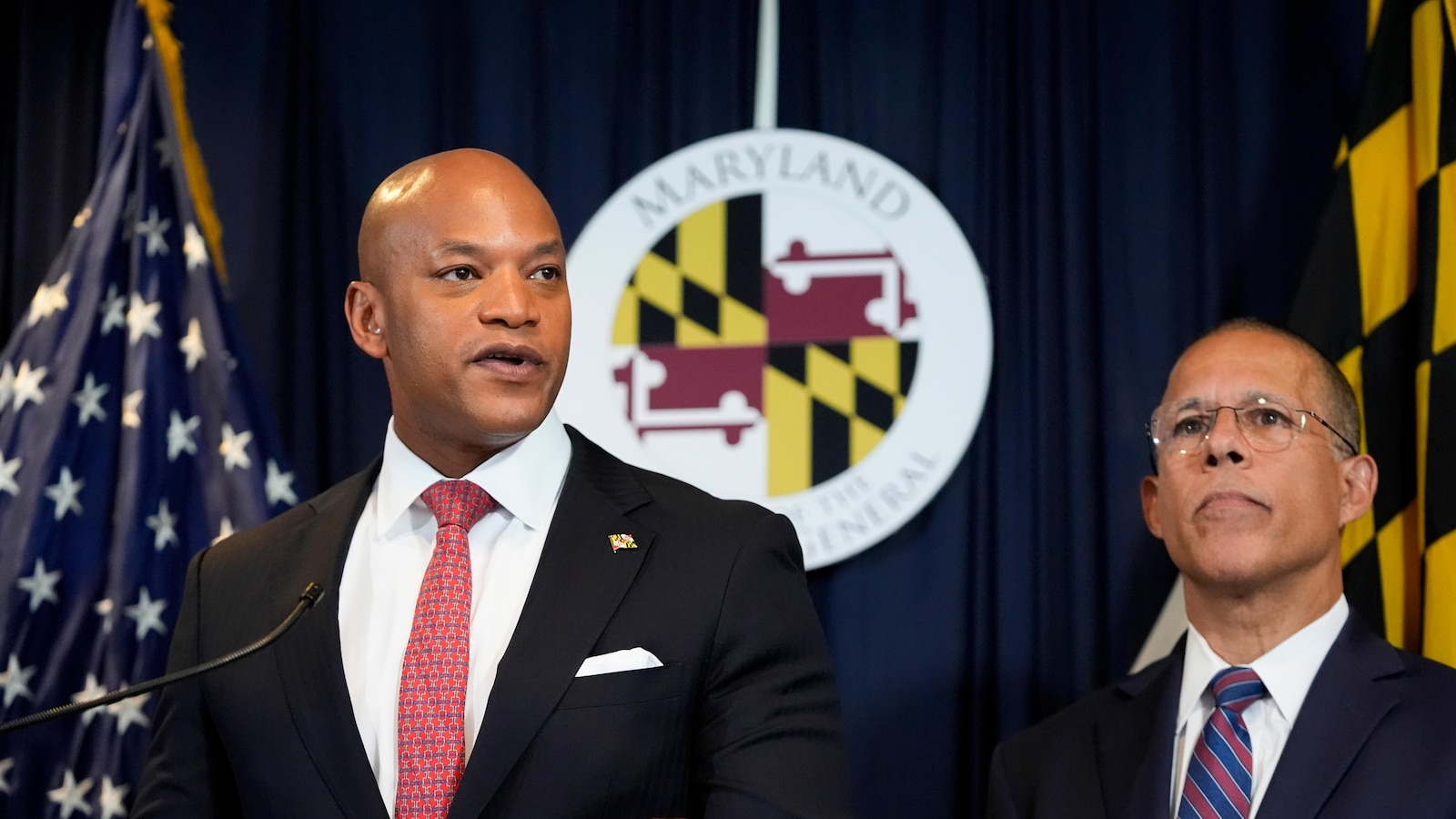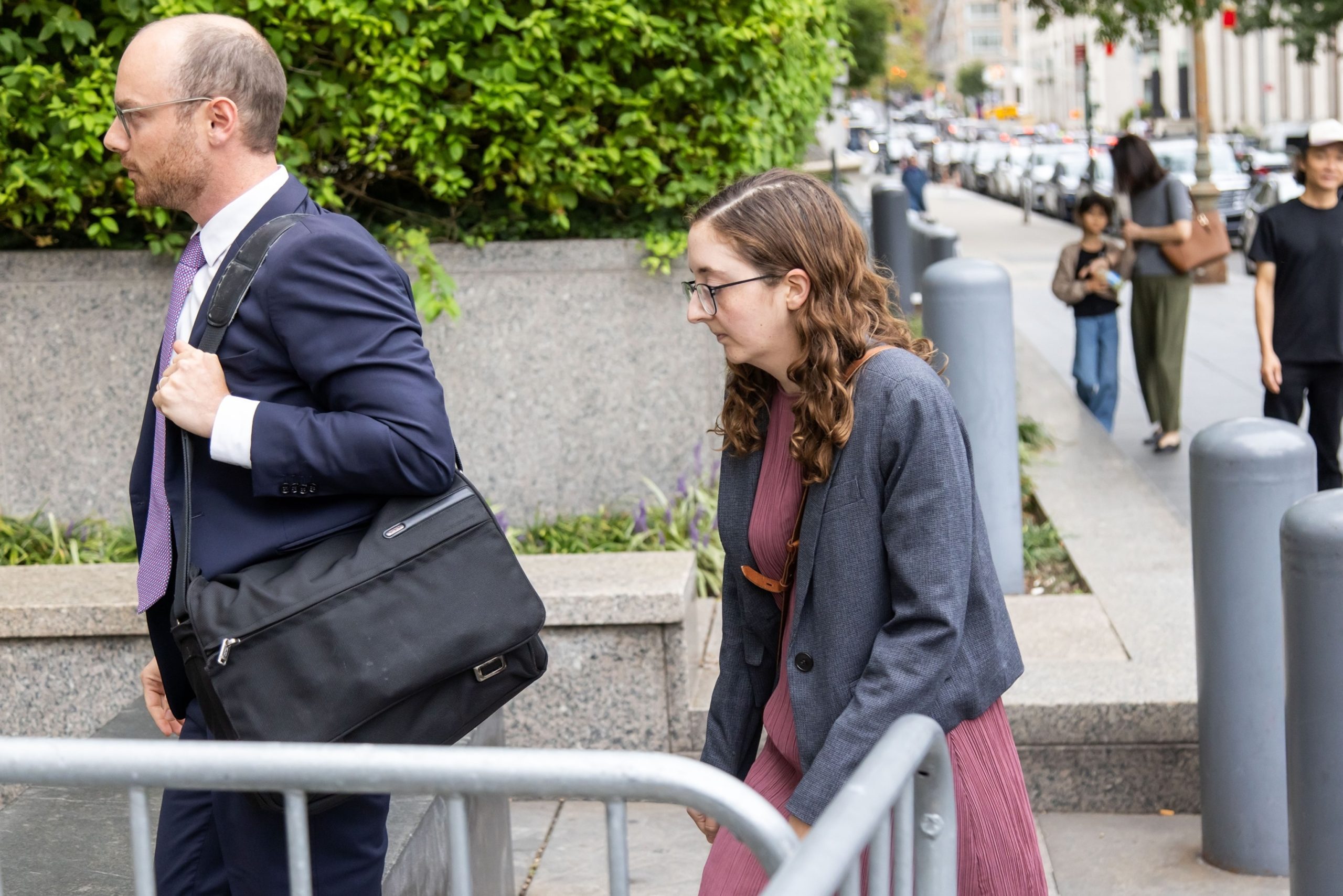
BALTIMORE — The state of Maryland has added to the legal troubles facing the owner and operator of the container ship Dali, which caused the deadly collapse of the Francis Scott Key Bridge after the massive vessel experienced an ill-timed electrical blackout and other failures.
Officials announced a new lawsuit Tuesday that echoes several other recent filings alleging the ship’s Singapore-based owner and manager, Grace Ocean Private Ltd. and Synergy Marine Group, knowingly sent an unseaworthy ship into U.S. waters.
“Hear me loud and clear. What happened in the early morning of March 26 should never have happened,” Gov. Wes Moore said at a news conference. “A bridge that was used by thousands of vehicles every single day should still be here right now. A key artery to the Port of Baltimore, which helped move billions of dollars of freight every single year, should still be here right now. And the six victims of the collapse should all be here right now.”
Six construction workers were killed when the ship rammed into one off the bridge’s support columns, causing the span to topple into the water. Their families have also sued the companies.
A suit filed last week by the U.S. Department of Justice provided the most detailed account yet of the cascading series of failures that left the Dali’s pilots and crew helpless in the face of looming disaster. That complaint alleges that mechanical and electrical systems on the ship had been “jury-rigged” and improperly maintained.
Darrell Wilson, a Grace Ocean spokesperson, said last week that the owner and manager “look forward to our day in court to set the record straight.”
FBI agents boarded the Dali in April amid a criminal investigation into the circumstances leading up to the collapse. Agents boarded another container ship managed by Synergy while it was docked in Baltimore on Saturday.
The Dali was leaving Baltimore for Sri Lanka when its steering failed because of the power loss. Six men on a road crew, who were filling potholes during an overnight shift, fell to their deaths as the bridge crumbled beneath them. The collapse snarled commercial shipping traffic through the Port of Baltimore for months before the channel was fully reopened in June.
Grace Ocean and Synergy filed a court petition days after the collapse seeking to limit their legal liability in what could become the most expensive marine casualty case in history.
Since then, a number of entities have filed opposing claims, including Baltimore’s mayor and city council, survivors of the collapse, local businesses and insurance companies. They’ve all been consolidated into one liability case and the deadline for claims to be filed is Tuesday.
The state’s claim seeks punitive damages against the companies as well as costs associated with cleaning up the wreckage and rebuilding the bridge. It also cites lost toll revenues, environmental contamination, damage to the state’s natural resources and other damages. Officials said they’re still working to quantify the total monetary loss.
“We will not allow Marylanders to be left with the bill for the gross negligence, mismanagement and incompetence that caused this harm,” Maryland Attorney General Anthony Brown said at Tuesday’s news conference. “No one can deny that the Dali’s destruction of the Key Bridge has caused just that: tremendous pain and suffering that will continue for years to come.”
The state of Maryland has filed a lawsuit against the ship owner and manager responsible for the Key Bridge collapse that occurred earlier this year. The lawsuit alleges negligence on the part of the ship owner and manager, claiming that their actions led to the collapse of the bridge and subsequent damage to property and disruption of traffic.
The Key Bridge collapse, which occurred in February, caused significant damage to the bridge itself as well as surrounding infrastructure. The collapse also resulted in a major traffic disruption, with the bridge being closed for several days while repairs were made. The lawsuit seeks to hold the ship owner and manager accountable for their role in the incident and to recover damages for the state of Maryland.
According to the lawsuit, the ship owner and manager failed to properly secure their vessel as it passed under the Key Bridge, leading to a collision with the bridge structure. This collision ultimately caused the collapse of a section of the bridge, resulting in extensive damage and disruption.
The lawsuit also alleges that the ship owner and manager were aware of the potential risks associated with passing under the Key Bridge, yet failed to take adequate precautions to prevent a collision. The state of Maryland is seeking compensation for the costs of repairing the bridge and surrounding infrastructure, as well as for any other damages incurred as a result of the collapse.
In response to the lawsuit, the ship owner and manager have denied any wrongdoing and have stated that they will vigorously defend themselves against the allegations. They have also expressed their commitment to working with the state of Maryland to address the aftermath of the Key Bridge collapse and to prevent similar incidents from occurring in the future.
The outcome of this lawsuit will have significant implications for both the ship owner and manager and for the state of Maryland. If the state is successful in proving negligence on the part of the ship owner and manager, it could set a precedent for holding responsible parties accountable for similar incidents in the future. On the other hand, if the ship owner and manager are able to successfully defend themselves against the allegations, it could raise questions about liability in cases of infrastructure damage caused by maritime accidents.
Overall, the lawsuit filed by Maryland against the ship owner and manager responsible for the Key Bridge collapse highlights the importance of ensuring that proper precautions are taken to prevent accidents and damage to critical infrastructure. It also serves as a reminder of the potential consequences of negligence in maritime operations and the need for accountability in such cases.


